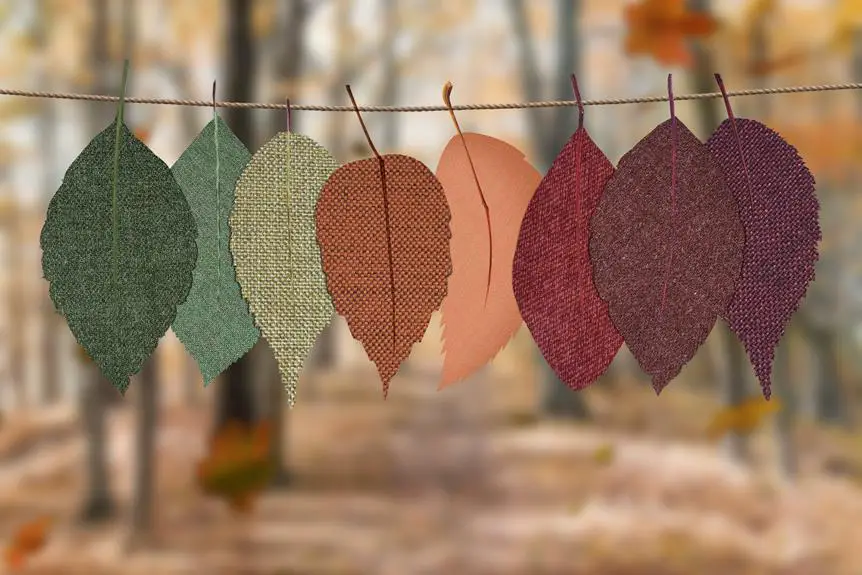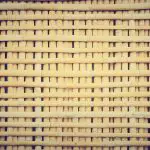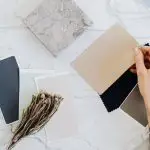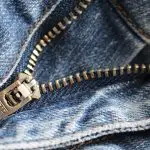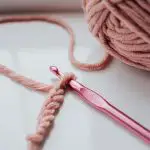You've probably experienced the frustration of a Velcro attachment that just won't stay put. Choosing the right fabric can make all the difference in achieving a secure and durable connection.
Understanding which fabrics work best with Velcro latches is essential for mastering your fastening needs. Factors such as weave, thickness, and surface texture play a crucial role in the effectiveness of Velcro closures. By selecting the appropriate materials, you can ensure a reliable and long-lasting bond.
In this guide, we'll explore the best fabrics for Velcro attachments, considerations for fabric-velcro interaction, and tips for testing and maintaining the compatibility of your materials.
Key Takeaways
- Fabrics with a rough or textured surface like canvas, denim, or nylon work well with Velcro.
- Thicker fabrics like fleece or felt provide cushioning and protection for Velcro.
- Fabrics with a tight weave like ripstop nylon or polyester offer excellent support for Velcro.
- Smooth, flat fabrics like nylon and polyester are compatible with Velcro adhesive.
Understanding Velcro Compatibility
To ensure your fabric works well with Velcro latches, you need to understand the compatibility between the two materials.
Velcro is a hook-and-loop fastening system that requires the engagement of tiny hooks with loops to function effectively. When considering fabric selection for use with Velcro, it's crucial to choose a material that won't only securely hold the hooks but also withstand frequent opening and closing without losing its integrity.
Fabrics such as fleece, felt, and some knits work well with Velcro due to their looped or tightly woven nature, which provides a suitable surface for the hooks to grip. On the other hand, smooth or slick fabrics like silk or nylon may not provide enough friction for the hooks to hold securely.
Additionally, the weight and thickness of the fabric should be considered to ensure it can handle the forces exerted on it when the Velcro is pulled apart.
Understanding the compatibility of different fabrics with Velcro latches is essential for selecting the most suitable material for your specific application.
Best Fabrics for Velcro Attachments
Choose fabrics that offer optimal grip and durability for Velcro attachments. The right fabric selection is crucial in ensuring a secure and long-lasting bond with Velcro. Consider the following compatibility factors when choosing fabrics for Velcro attachments:
- Texture: Opt for fabrics with a rough or textured surface such as canvas, denim, or nylon. These textures provide enhanced grip, allowing the Velcro to firmly adhere to the fabric.
- Strength: Select fabrics known for their strength and resilience, such as Cordura or ballistic nylon. These fabrics can withstand repeated opening and closing of Velcro attachments without deteriorating.
- Thickness: Thicker fabrics like felt or fleece provide a cushioning effect that can help protect the Velcro from wear and tear, prolonging its lifespan.
- Weave: Fabrics with a tight weave, such as ripstop nylon or polyester, offer excellent support for Velcro attachments. The tight weave prevents the Velcro hooks from getting caught or snagged, preserving their integrity over time.
Factors Affecting Fabric-Velcro Interaction
When considering the interaction between fabric and Velcro, it's important to take into account factors such as fabric weight and texture, the adhesive strength of the Velcro, and the durability and maintenance requirements of both the fabric and the Velcro.
These factors can greatly influence the effectiveness and longevity of the fabric-Velcro interaction, so it's crucial to carefully consider them when choosing materials for your project.
Fabric Weight and Texture
For optimal fabric-Velcro interaction, consider the weight and texture of the fabric. The fabric weight and texture compatibility play a crucial role in the effectiveness of Velcro latches. When choosing fabrics for Velcro applications, keep the following factors in mind:
- Weight: Opt for medium to heavy-weight fabrics as they provide better support and durability for Velcro attachments, enhancing the overall strength of the bond.
- Texture: Select fabrics with a smooth or slightly textured surface to ensure a secure grip with the Velcro, preventing slippage and maintaining a strong hold over time.
- Weave: Look for tightly woven fabrics to minimize the chances of the Velcro fibers getting caught in the fabric weave, ensuring a smooth closure every time.
- Pile: Fabrics with minimal pile, such as twill or canvas, are ideal for Velcro as they reduce the likelihood of lint buildup, preserving the Velcro's adhesive strength.
Velcro Adhesive Strength
Consider the adhesive strength of Velcro in relation to the chosen fabric, as it directly impacts the overall effectiveness of the fabric-Velcro interaction. The Velcro adhesive durability is influenced by the fabric texture and compatibility.
Smooth, flat fabrics such as nylon and polyester tend to work well with Velcro due to their uniform surface, allowing for a strong bond. On the other hand, fabrics with a loose weave or rough texture may reduce the adhesive strength of Velcro, affecting its durability over time.
When selecting fabrics for Velcro latches, it's crucial to prioritize those that offer optimal compatibility with the Velcro adhesive, ensuring a long-lasting and secure fabric-Velcro interaction.
Understanding the impact of fabric texture on Velcro adhesive strength is essential for achieving the desired functionality and longevity of the attachment.
Durability and Maintenance
To ensure the longevity of the fabric-Velcro interaction, you need to consider factors such as durability and maintenance, which directly affect the effectiveness of the attachment.
- Durability: Choose fabrics that can withstand frequent opening and closing without fraying or losing their grip.
- Washing Instructions: Follow the manufacturer's washing guidelines to maintain the fabric's integrity and the Velcro's adhesive properties.
- Avoid Harsh Chemicals: Refrain from using harsh chemicals or bleach when washing the fabric to prevent damage to the Velcro.
- Regular Inspections: Periodically check the fabric-Velcro attachment for any signs of wear and tear, addressing any issues promptly to prolong their lifespan.
Tips for Choosing Velcro-Compatible Fabrics
When selecting velcro-compatible fabrics, prioritize durability and flexibility to ensure optimal performance. Look for fabrics that can withstand frequent opening and closing without losing their grip strength. Materials like nylon, polyester, and vinyl are excellent choices due to their resilience and ability to maintain velcro attachment over time.
Additionally, consider the thickness and texture of the fabric. A thicker fabric provides a sturdy base for the velcro attachment, while a smooth texture can prevent snagging and prolong the life of the velcro.
It's also important to assess the material compatibility with velcro. Some fabrics may have a tendency to fray or shed, which can compromise the effectiveness of the velcro over time. Conduct thorough research on the fabric selection and choose options that are known for their velcro compatibility.
Testing Fabric Suitability for Velcro
Assessing fabric suitability for velcro involves testing its durability and flexibility, ensuring it can maintain a strong grip and withstand frequent use.
When conducting fabric testing for velcro compatibility, keep these essential considerations in mind:
- Tensile Strength: Evaluate the fabric's ability to withstand pulling forces without tearing or losing shape. This ensures that the velcro latches will securely hold in place even under strain, providing you with confidence in its reliability.
- Abrasion Resistance: Test the fabric for its resistance to wear and tear. A velcro latch attached to a fabric with high abrasion resistance will remain effective and undamaged, giving you peace of mind that it will endure repeated use.
- Flexibility: Assess how well the fabric can conform to different shapes and movements, as this impacts the velcro's ability to maintain a secure grip. A flexible fabric ensures that the velcro can adapt to various conditions without compromising its effectiveness.
- Fastener Longevity: Examine how the fabric and velcro interact over time. A suitable fabric will prolong the life of the velcro, providing a durable and long-lasting attachment solution.
Specialty Fabrics and Velcro Applications
As you explore specialty fabrics and their applications with Velcro, you'll discover unique opportunities to enhance the performance and versatility of your fastening solutions. Custom designs and innovative textiles play a crucial role in expanding the capabilities of Velcro applications.
Custom designs allow you to tailor the fabric to the specific needs of your Velcro application, ensuring a perfect fit and optimal performance. Whether it's creating intricate patterns for fashion applications or designing specialized textures for industrial uses, custom designs enable you to maximize the potential of Velcro fastenings.
Innovative textiles open up new frontiers for Velcro applications. Advanced materials like moisture-wicking fabrics enhance the functionality of Velcro in sportswear and active gear, while high-strength, lightweight textiles elevate Velcro's utility in aerospace and automotive industries. These innovative textiles not only improve the performance of Velcro but also contribute to the overall efficiency and durability of the fastening solutions.
Maintenance and Care for Velcro and Fabrics
To maintain Velcro and fabrics, regularly brush away any accumulated debris and gently hand wash the items as needed. Proper care and maintenance can significantly extend the lifespan of Velcro and fabrics, ensuring they remain effective and in good condition for longer periods.
Here are some essential tips for maintaining and caring for Velcro and fabrics:
- Regular Cleaning: Brush away any dirt, lint, or debris from the Velcro fasteners to prevent buildup, which can affect their gripping ability.
- Gentle Hand Washing: When cleaning fabrics with attached Velcro, opt for gentle hand washing to prevent damage to the fabric and maintain the integrity of the Velcro.
- Avoiding Fabric Pilling: To prevent fabric pilling, turn garments with attached Velcro inside out before washing and use a gentle cycle.
- Preventing Stretching: Avoid excessive pulling or stretching of fabrics with attached Velcro to maintain their original shape and prevent damage to the fastening system.
Frequently Asked Questions
Can Velcro Be Used on Delicate Fabrics Such as Silk or Chiffon?
Yes, you can use velcro on delicate fabrics like silk and chiffon. When using velcro on silk, opt for a low-profile, lightweight velcro. For chiffon, consider using velcro with softer edges to prevent snagging.
Are There Any Fabrics That Should Be Avoided When Using Velcro Due to Potential Damage or Wear?
To avoid damage and prevent wear, it's best to avoid using velcro on delicate fabrics like silk or chiffon. Instead, opt for more durable options like stretchy fabric or materials with waterproof attachment for longevity.
How Can I Prevent Fabric Pilling or Snagging When Using Velcro Attachments?
To prevent pilling and snagging when using Velcro attachments, choose fabrics with tight weaves like denim, canvas, or nylon. Consider using a protective layer such as interfacing or lining to minimize friction and potential damage.
Are There Any Special Considerations for Using Velcro With Waterproof or Water-Resistant Fabrics?
When using waterproof or water-resistant fabrics with Velcro, ensure the fabric is compatible with the adhesive. Apply sufficient pressure when attaching Velcro to these fabrics to ensure a strong bond. These considerations will help prevent detachment in wet conditions.
Can Velcro Be Used on Stretchy or Elastic Fabrics, and Are There Any Special Techniques for Ensuring a Secure Attachment?
Yes, you can use Velcro on stretchy or elastic fabrics. To ensure a secure attachment, sew the Velcro onto the fabric using a zigzag stitch. For denim, a strong adhesive may be needed. For jersey, a stretch stitch works best.
- How Does Ring Spun Cotton Affect Garment Fit and Shape Retention? - August 13, 2024
- What Are the Challenges in Producing Ring Spun Cotton? - August 13, 2024
- Is Ring Spun Cotton Suitable for Plus-Size Clothing? - August 13, 2024

